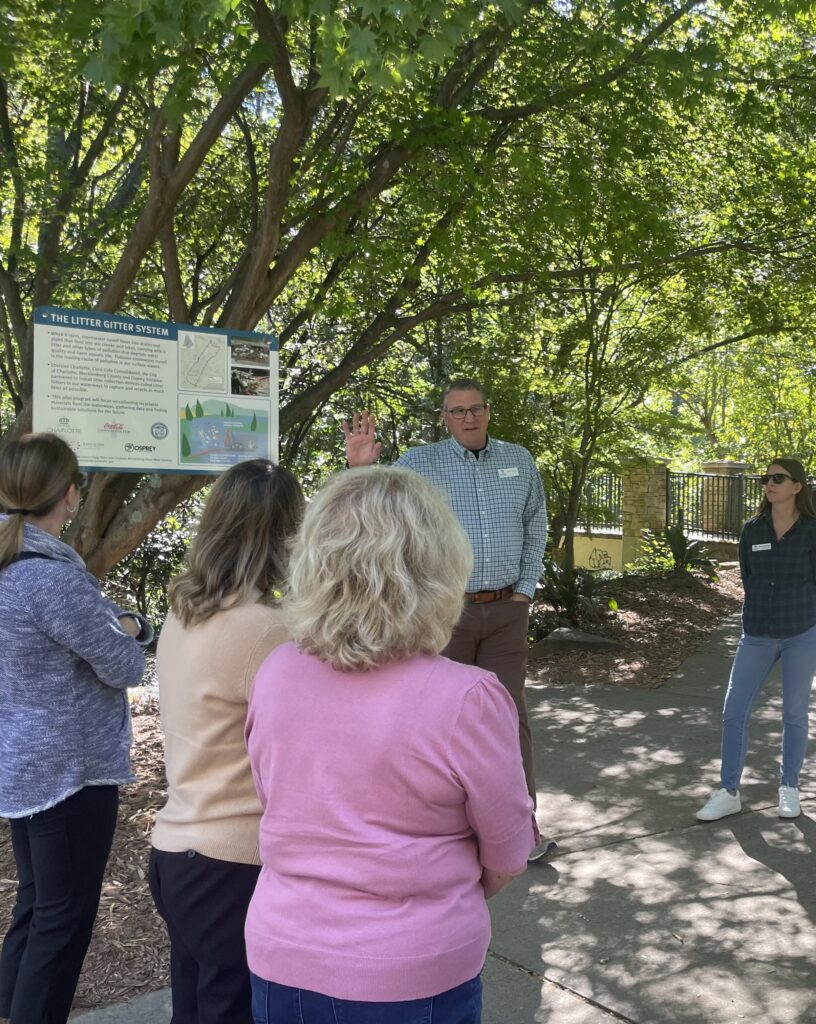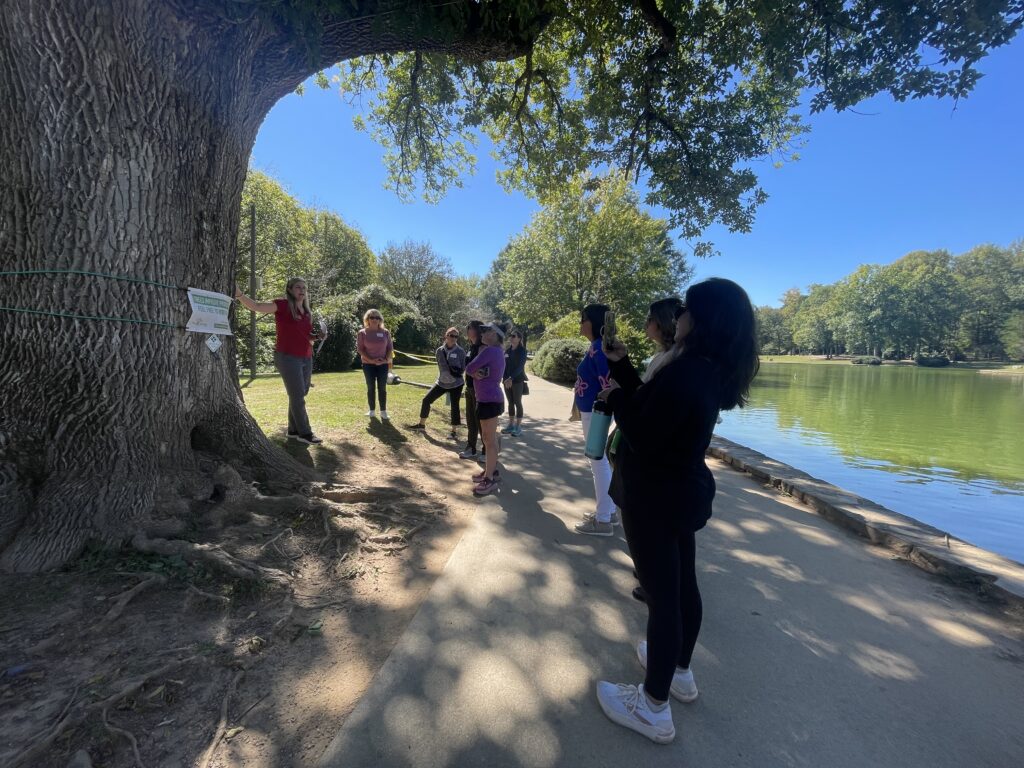Recap: River and Root: Understanding Charlotte’s Treasures
By Srujana Kanchibhotla, Communications & Marketing Committee
As we greet the crisp embrace of fall, we’re excited to recap our recent event celebrating the beauty of nature while emphasizing the importance of our local water resources as we set off to appreciate Freedom Park in all its autumn glory.
Our walking tour began with an exploration of the park’s trees by Heather Brent, Urban Forest Educator of TreesCharlotte. Did you know the most commonly planted tree in Charlotte is the oak? We focused on the majestic red oaks and their cousins, the willow oaks, which thrive throughout Freedom Park. An interesting fact we learned was about Queen’s Road West, famous for its stunning tree-lined streets, which are filled predominantly with willow oaks. These trees were transported from the countryside in the early 1900s by horse and buggy, and were carefully planted to grow into the magnificent specimens we admire today. However, these trees are aging, highlighting the importance of preservation.
Willow oaks, often considered the iconic tree of Charlotte, play a crucial role in supporting local wildlife and maintaining a vibrant ecosystem. Yet, while our landscape is rich in these oaks, a lack of diversity makes us vulnerable to diseases that could threaten our tree population. Fortunately, Tree Charlotte promotes diversity by planting and giving away 70 different species of trees.





And let’s be clear: don’t even think about cutting down a tree without a permit! The City of Charlotte imposes hefty fines—up to $200 per inch—for unlawful removals. These fines can be reduced if you plant replacement trees. Our trees are a cherished part of our community!
For those interested in learning more about Charlotte’s impressive trees, consider subscribing to Tree Charlotte’s newsletter, which includes links to their self-guided “Treasure Tree” walking tour and opportunities to sign up for their various guided tours of the city’s remarkable trees.
In the second part of our tour, we met with John Searby, Executive Director of Catawba Riverkeepers, who shared insights about Charlotte’s water and the impact of pollutants on our drinking supply. If you live in Mecklenburg County or the surrounding areas, your water comes from the Catawba River. The mission of the Catawba Riverkeepers is to bridge the gap between public demand for waterway protection and the governmental services in place to ensure it.
Established in 1997, The Catawba Riverkeepers work to enforce the Clean Water Act, affirming that our waters belong to us as citizens. Their dedicated staff reviews hundreds of pages of permits every five years, ensuring that polluters reduce their emissions. A notable success story involves their intervention with Baxter Corp, which was discharging water that was too hot for fish survival. Thanks to their advocacy, Baxter Corp implemented technology to cool the water before it enters the river and now, Catawba Riverkeepers are happy to report that the fish have returned.
Another vital aspect of their work is tackling stormwater pollution, evermore important after recent disasters like Hurricane Helene. One innovative initiative, the “Litter Gitter,” a tool that collects trash from waterways, helps prevent further pollution. After four years of monitoring, it’s estimated that 90% of what’s removed is plastic. By analyzing the data, Riverkeepers can engage with corporations to improve waste management policies.
As we reflect on this enlightening day, we’re inspired to continue our commitment to protecting our natural resources. Together, we can make a difference!
.


